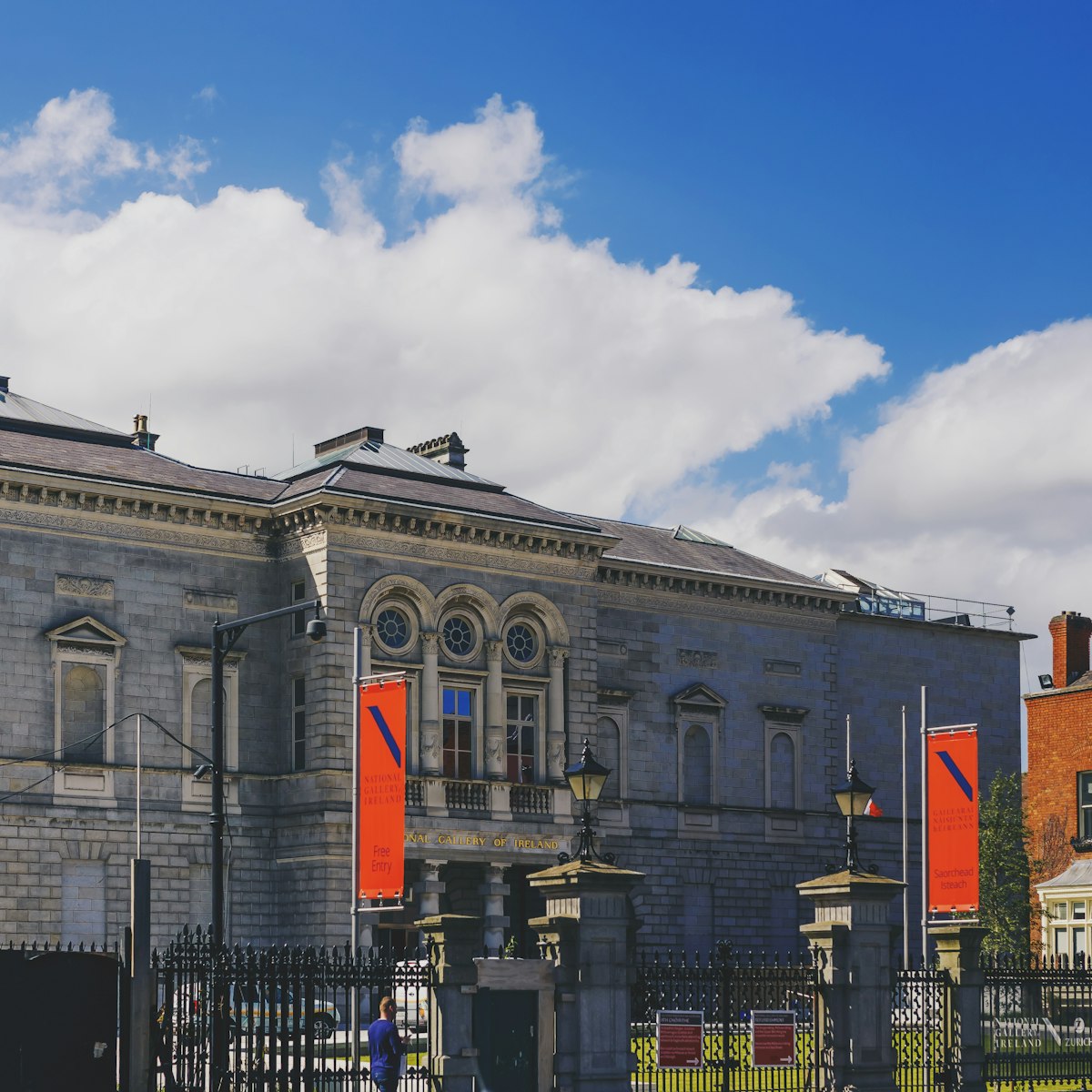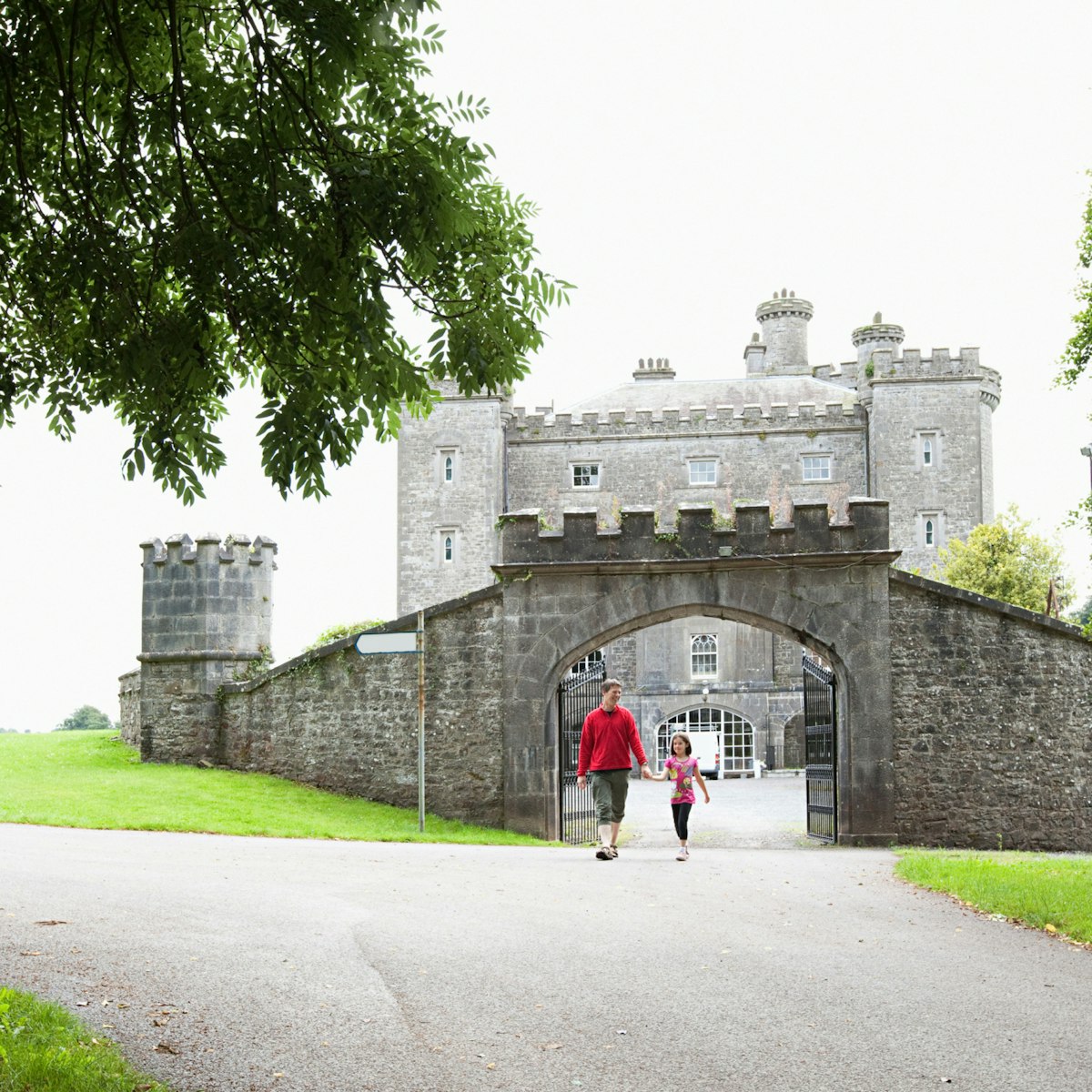South of Tara's church, the Royal Enclosure is a large oval Iron Age hill fort, 315m in diameter and surrounded by a bank and ditch cut through solid rock under the soil. Inside are several smaller earthworks: the Mound of the Hostages (closed to the public); Royal Seat, a ring fort with a house site; and Cormac's House, a barrow (burial mound) in the side of the circular bank, which is topped by the Stone of Destiny.
The Mound of the Hostages, a bump in the northern corner of the enclosure, is the most ancient known part of Tara. A treasure trove of artefacts was unearthed, including some ancient Mediterranean beads of amber and faience (glazed pottery). More than 35 Bronze Age burials were found here, as well as extensive cremated remains from the Stone Age.
There are superb views of the surrounding Boyne and Blackwater Valleys from the Royal Seat and Cormac's House.
Atop Cormac's House is the phallic Stone of Destiny (originally located near the Mound of the Hostages), which represents the joining of the gods of the earth and the heavens. It's said to be the inauguration stone of the high kings, although alternative sources suggest that the actual coronation stone was the Stone of Scone, which was taken to Scotland in the early 6th century and – after several centuries in London's Westminster Abbey – now sits in Edinburgh. The would-be king stood on top of the Stone of Destiny and, if the stone let out three roars, he was crowned. The mass grave of 37 men who died in a skirmish on Tara during the 1798 Rising is next to the stone.







